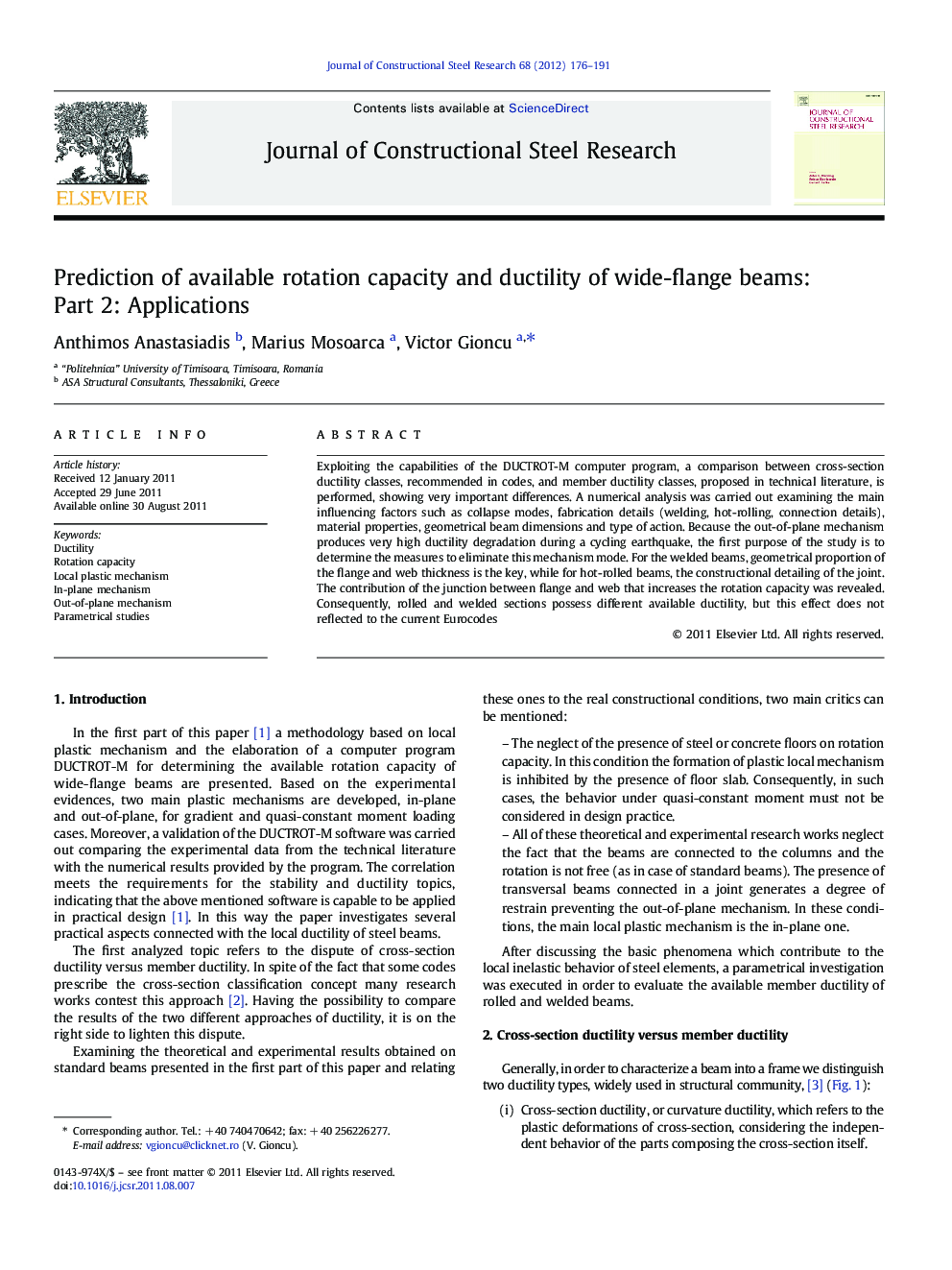| Article ID | Journal | Published Year | Pages | File Type |
|---|---|---|---|---|
| 285316 | Journal of Constructional Steel Research | 2012 | 16 Pages |
Exploiting the capabilities of the DUCTROT-M computer program, a comparison between cross-section ductility classes, recommended in codes, and member ductility classes, proposed in technical literature, is performed, showing very important differences. A numerical analysis was carried out examining the main influencing factors such as collapse modes, fabrication details (welding, hot-rolling, connection details), material properties, geometrical beam dimensions and type of action. Because the out-of-plane mechanism produces very high ductility degradation during a cycling earthquake, the first purpose of the study is to determine the measures to eliminate this mechanism mode. For the welded beams, geometrical proportion of the flange and web thickness is the key, while for hot-rolled beams, the constructional detailing of the joint. The contribution of the junction between flange and web that increases the rotation capacity was revealed. Consequently, rolled and welded sections possess different available ductility, but this effect does not reflected to the current Eurocodes
► Using the DUCTROT-M computer program a numerical analysis is performed. ► The parametrical study reveals important differences between cross-section ductility classes and member ductility classes. ► Out-of-plane mechanism produces very high ductility degradation. ► Welded beams are sized from flange and web thickness ductility criterion. ► For hot-rolled sections the constructional detailing of the joint and the web-flange junction is the ductility design criterion.
